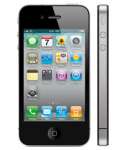
At the special iPhone 4 conference yesterday, Apple’s CEO Steve Jobs claimed that every smartphone lose signal strength if you hold it in a certain way and it is not something unique to iPhone 4.
Steve Jobs explained that they have got to the heart of the problem, and that is smartphone have weak spots.
Apple has also published new pages on its website to explain the antenna issues.
Apple explains attenuation and signal loss:
The opposite of amplification, attenuation happens whenever a signal is obstructed. All antennas — including television, radio, GPS, and cellular antennas — can experience attenuation. And with most antennas, the density and composition of the human hand can cause attenuation to a greater degree than some other materials. On a mobile phone, signal loss typically occurs when your hand attenuates the most sensitive part of the antenna. In the photos and videos below, we demonstrate how different grips cause attenuation on many popular smartphones — including iPhone 4 and iPhone 3GS
Apple has also demonstrated how smartphones like iPhone 4, RIM’s BlackBerry Bold 9700, HTC’s Droid Eric, Samsung’s Omnia II lose signal strength when you grip it in a certain way.
Apple also published photos to point out the attenuation weak spots for these smartphones and the grip that could negatively effect signal strength.
iPhone 4:

As seen in the screenshot above, the external antenna on iPhone 4 is located in the stainless steel band. The attenuation weak spot is the black strip in the lower left corner of the band.

In weak signal areas, if you grip the iPhone 4 as seen above then it way may negatively affect signal strength.
iPhone 3GS

In case of iPhone 3GS, the location of internal antenna is at the bottom.

In weak signal areas, if you grip Samsung Omnia II as seen above then it may negatively affect signal strength.
BlackBerry Bold 9700:

In case of BlackBerry Bold 9700, the location of internal antenna is at the bottom.

In weak signal areas, if you grip BlackBerry Bold 9700 as seen above then it may negatively affect signal strength.
HTC Droid Eris

In case of HTC Droid Eris, the location of internal antenna is at the top.

In weak signal areas, if you grip HTC Droid Eris as seen above then it may negatively affect signal strength.
Samsung Omnia II

In case of Samsung Omnia II, the location of internal antenna is at the bottom.

In weak signal areas, if you grip Samsung Omnia II as seen above then it may negatively affect signal strength.
Our opinion:
The information that Steve Jobs and Apple has provided should definitely help in educating users about the reason for the drop in signal strength when they grip an iPhone or other smartphones in a certain way.
However, few things are quite obvious from these comparisons:
-
Users are least likely to grip the HTC Droid and Samsung Omnia II that could negatively affect signal strength in weak signal areas as their internal antenna is at the top.
-
Users (like me who hold their phone in the left hand) are more likely to grip the iPhone 4 in a way that could negatively affect signal strength in weak signal areas.
-
Since iPhone 4’s antenna is external, its weak spot is visible, which is not the case with other smartphones. I’m sure many of you would have found out about the position of the antennas in these smartphones only after reading this article.
As John Siracusa of Ars Technica points out that there are few benefits of having an external antenna such as better signal quality (since its not in a casing), better battery life as Apple has been able to squeeze in a bigger battery, better aesthetics, more structural rigidity but it is at the expense of a more visible and sensitive “weak spot”. That is the reason they had to explain the death grip problem after iPhone 4 was launched and not with earlier iPhone models.
Apple has done the right thing by giving away free cases to all its iPhone 4 customers even though they found that it is affecting a very small percentage of users and offering a full refund to customers who are not happy getting a free case.
At the end of the day, customers will vote whether the trade-off is a deal breaker. Based on the numbers Apple announced yesterday (3 million iPhones in just 3 weeks) it looks like most customers don’t think its a deal breaker.
But I’m sure Apple is working hard to figure out a solution as they don’t want to give users who are sitting on the fence a reason to buy some other smartphone.
Let us know your views in the comments section below.
[via Apple]